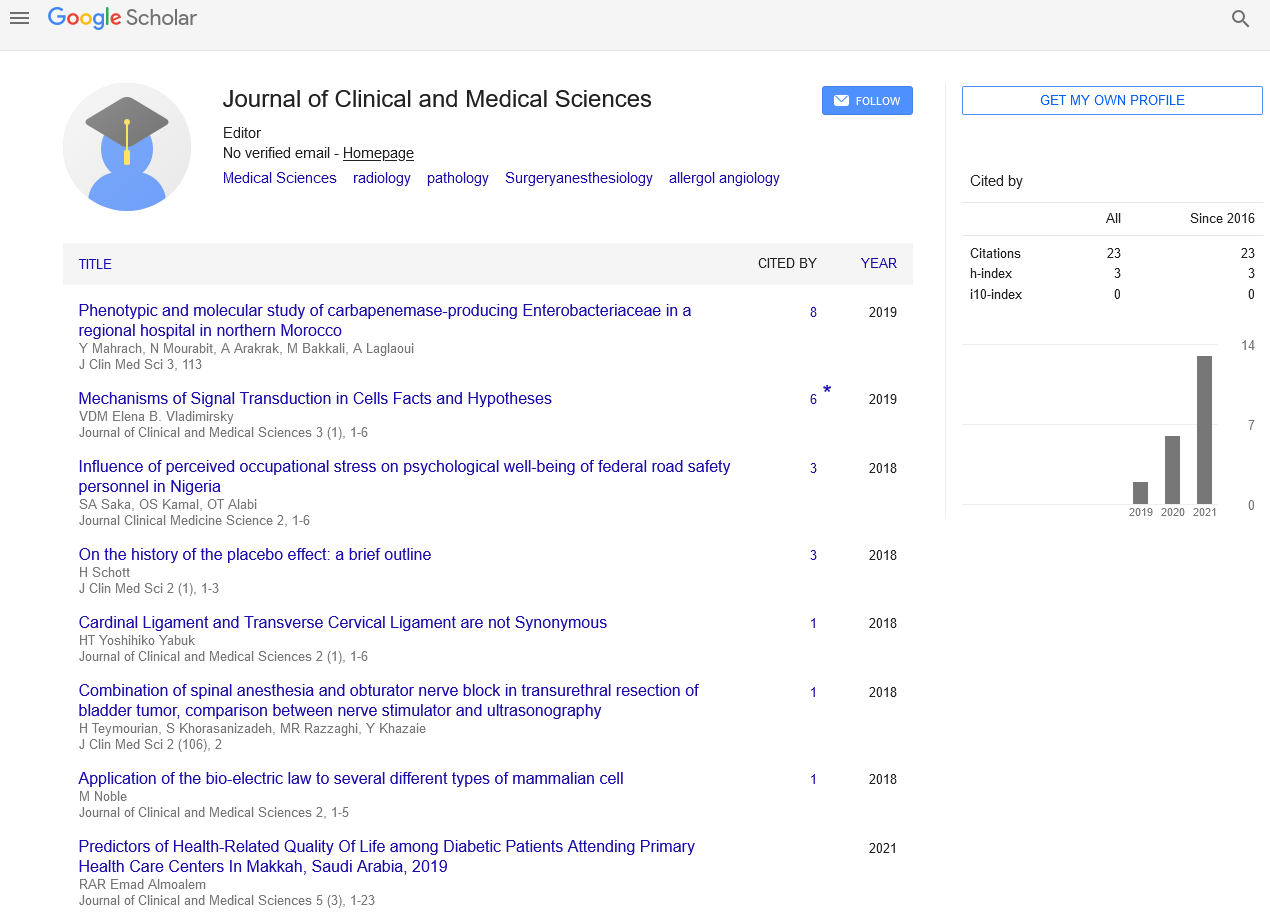Indexed In
- Euro Pub
- Google Scholar
Useful Links
Share This Page
Journal Flyer

Open Access Journals
- Agri and Aquaculture
- Biochemistry
- Bioinformatics & Systems Biology
- Business & Management
- Chemistry
- Clinical Sciences
- Engineering
- Food & Nutrition
- General Science
- Genetics & Molecular Biology
- Immunology & Microbiology
- Medical Sciences
- Neuroscience & Psychology
- Nursing & Health Care
- Pharmaceutical Sciences
Abstract
Mechanisms of Signal Transduction in Cells Facts and Hypotheses
Elena B. Vladimirsky* and Vitali D. Milman
Our main assumption is that interaction between inductor and target molecules in cells is based on laws of quantum physics. An inductor molecule emits a specific monochromatic radiation which is captured by the appropriate target molecule according to the bio resonance absorption principle triggering the emission of its own radiation and thus turning it from target into inductor. This is a chain process that creates a signal path, along which the activated molecules move and interact with each other through contact as described by molecular biology. As part of this process, all impact (information) is mediated through electro-magnetic particles (biophotons) that interact with each other in the electromagnetic field according to laws of constructive and destructive interference. Increase or decrease in the target’s response depends on type of interference predominance. Due to this effect, weak signals are sometimes able to produce stronger response than strong ones as the increase in their number leads to expansion of the area of destructive interference. This principle was confirmed in our pilot study using 3 experimental cell models: formation of colonies of granulocyte-macrophage precursors in soft agar under different concentrations of G-CSF; formation of colonies of erythrocyte precursors in methyl-cellulose under different concentrations of erythropoietin; apoptosis of mice melanoma cells (cell line B16) under different concentrations of vincristine. Further development of the biphotonic paradigm of information transduction in cell systems may contribute to better understanding of many normal and pathological processes in human body as well to improvement in some types of drug therapies.
Published Date: 2019-04-20; Received Date: 2019-04-29

